J. Fierrez
Evaluation of direct attacks to fingerprint verification systems
Dec 15, 2022Abstract:The vulnerabilities of fingerprint-based recognition systems to direct attacks with and without the cooperation of the user are studied. Two different systems, one minutiae-based and one ridge feature-based, are evaluated on a database of real and fake fingerprints. Based on the fingerprint images quality and on the results achieved on different operational scenarios, we obtain a number of statistically significant observations regarding the robustness of the systems.
Exploring Body Texture from mmW Images for Person Recognition
Mar 27, 2022
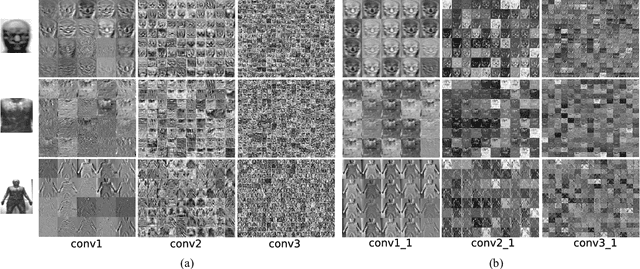

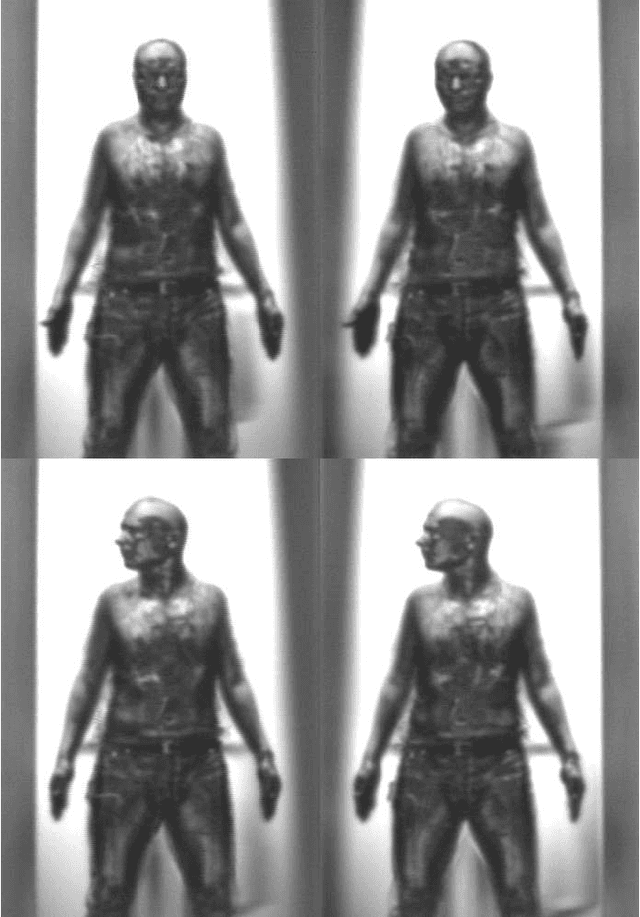
Abstract:Imaging using millimeter waves (mmWs) has many advantages including the ability to penetrate obscurants such as clothes and polymers. After having explored shape information retrieved from mmW images for person recognition, in this work we aim to gain some insight about the potential of using mmW texture information for the same task, considering not only the mmW face, but also mmW torso and mmW wholebody. We report experimental results using the mmW TNO database consisting of 50 individuals based on both hand-crafted and learned features from Alexnet and VGG-face pretrained Convolutional Neural Networks (CNN) models. First, we analyze the individual performance of three mmW body parts, concluding that: i) mmW torso region is more discriminative than mmW face and the whole body, ii) CNN features produce better results compared to hand-crafted features on mmW faces and the entire body, and iii) hand-crafted features slightly outperform CNN features on mmW torso. In the second part of this work, we analyze different multi-algorithmic and multi-modal techniques, including a novel CNN-based fusion technique, improving verification results to 2% EER and identification rank-1 results up to 99%. Comparative analyses with mmW body shape information and face recognition in the visible and NIR spectral bands are also reported.
A Survey of Super-Resolution in Iris Biometrics with Evaluation of Dictionary-Learning
Mar 27, 2022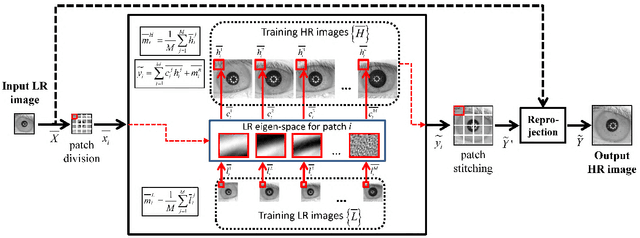
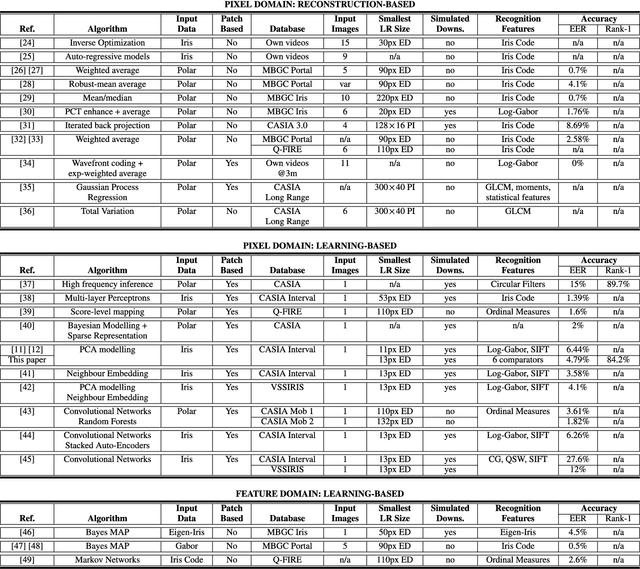
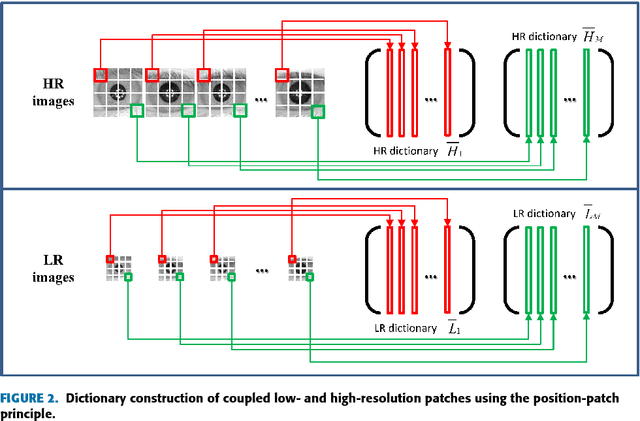

Abstract:The lack of resolution has a negative impact on the performance of image-based biometrics. While many generic super-resolution methods have been proposed to restore low-resolution images, they usually aim to enhance their visual appearance. However, a visual enhancement of biometric images does not necessarily correlate with a better recognition performance. Reconstruction approaches need thus to incorporate specific information from the target biometric modality to effectively improve recognition. This paper presents a comprehensive survey of iris super-resolution approaches proposed in the literature. We have also adapted an Eigen-patches reconstruction method based on PCA Eigen-transformation of local image patches. The structure of the iris is exploited by building a patch-position dependent dictionary. In addition, image patches are restored separately, having their own reconstruction weights. This allows the solution to be locally optimized, helping to preserve local information. To evaluate the algorithm, we degraded high-resolution images from the CASIA Interval V3 database. Different restorations were considered, with 15x15 pixels being the smallest resolution. To the best of our knowledge, this is among the smallest resolutions employed in the literature. The framework is complemented with six public iris comparators, which were used to carry out biometric verification and identification experiments. Experimental results show that the proposed method significantly outperforms both bilinear and bicubic interpolation at very low-resolution. The performance of a number of comparators attains an impressive Equal Error Rate as low as 5%, and a Top-1 accuracy of 77-84% when considering iris images of only 15x15 pixels. These results clearly demonstrate the benefit of using trained super-resolution techniques to improve the quality of iris images prior to matching.
Characterization of the Handwriting Skills as a Biomarker for Parkinson Disease
Mar 19, 2019


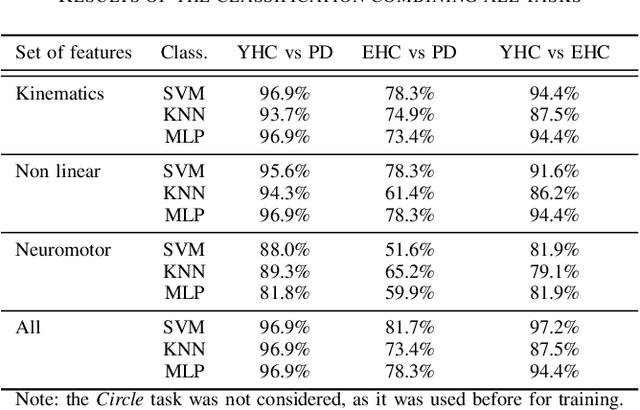
Abstract:In this paper we evaluate the suitability of handwriting patterns as potential biomarkers to model Parkinson disease (PD). Although the study of PD is attracting the interest of many researchers around the world, databases to evaluate handwriting patterns are scarce and knowledge about patterns associated to PD is limited and biased to the existing datasets. This paper introduces a database with a total of 935 handwriting tasks collected from 55 PD patients and 94 healthy controls (45 young and 49 old). Three feature sets are extracted from the signals: neuromotor, kinematic, and nonlinear dynamic. Different classifiers are used to discriminate between PD and healthy subjects: support vector machines, knearest neighbors, and a multilayer perceptron. The proposed features and classifiers enable to detect PD with accuracies between 81% and 97%. Additionally, new insights are presented on the utility of the studied features for monitoring and detecting PD.
 Add to Chrome
Add to Chrome Add to Firefox
Add to Firefox Add to Edge
Add to Edge